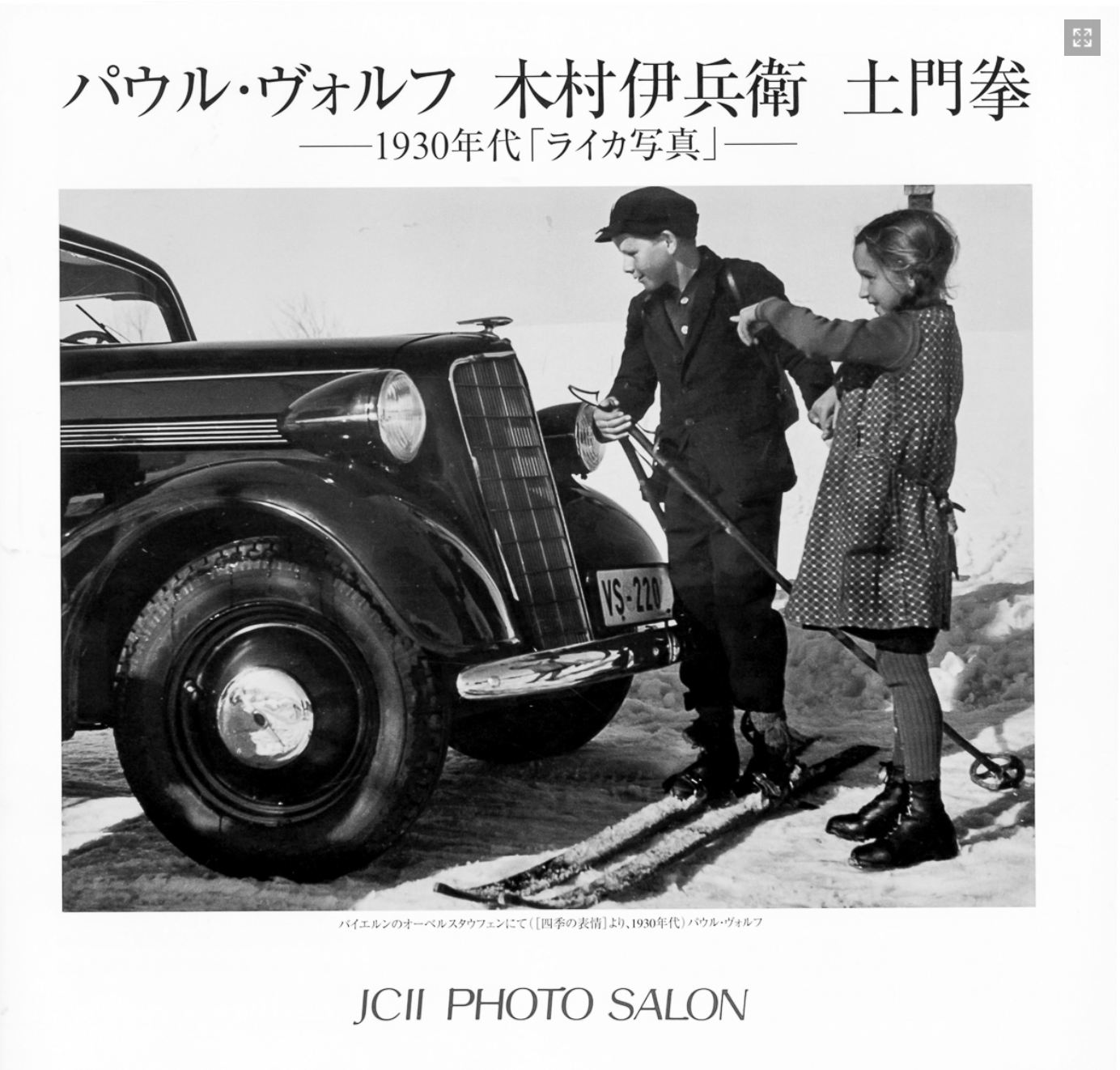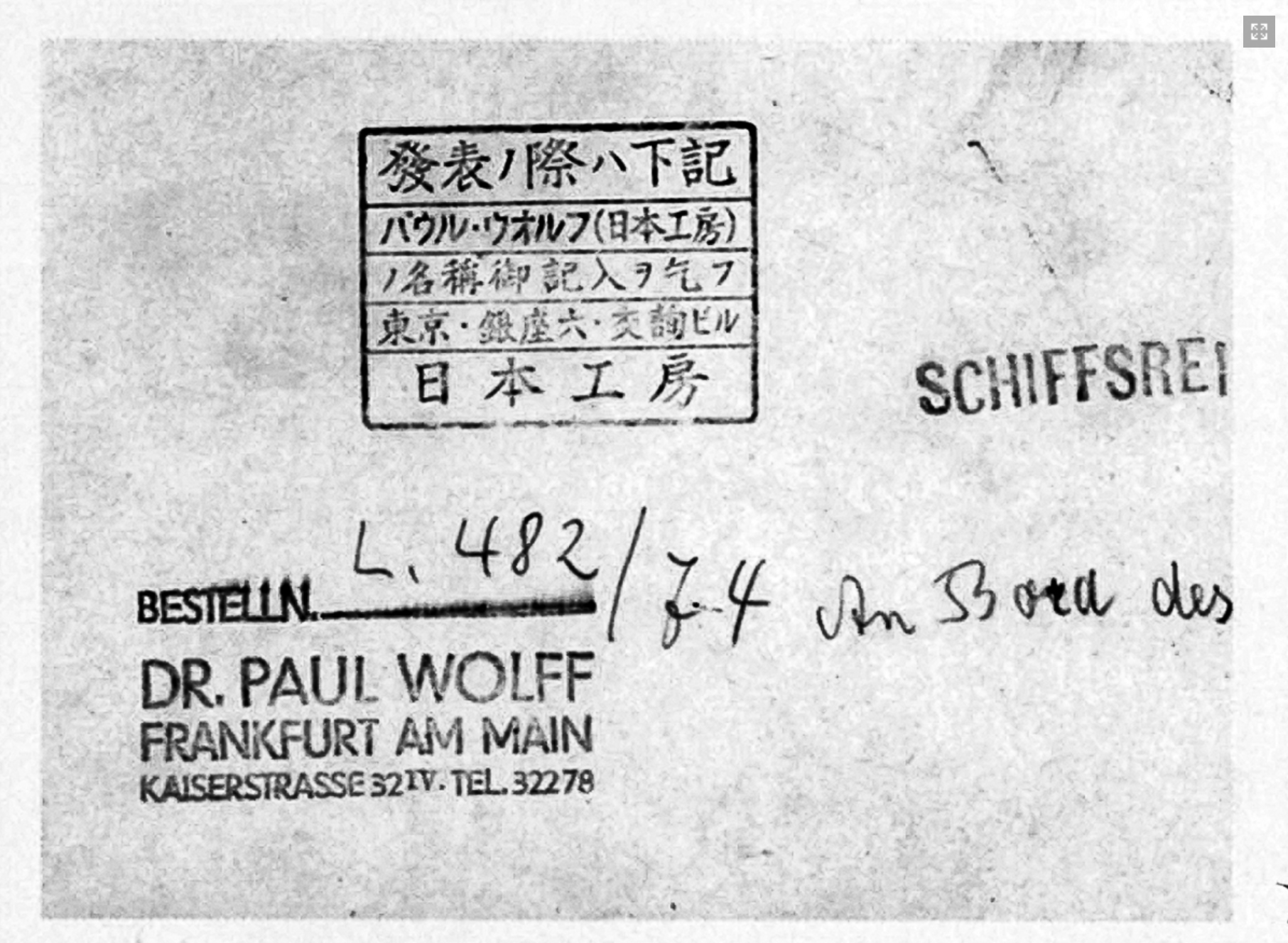Paul Wolff's Leica Photo Exhibitions in Japan
Last year, as the finishing touches were being made on the Dr. Paul Wolff Bibliography, I became aware of an exhibition catalogue from a December 2008 photo salon at the JCII (Japan Camera Industry Institute) Museum in Tokyo. This salon was entitled “1930’s Leica Photographs”. It ran for 3 weeks and featured photographs by Dr. Wolff, as well as images from two well-known Japanese photographers of that period, Ihei Kimura and Ken Domon. I attempted to find the exhibition catalogue on line to examine it or to buy it for the bibliography, but to no avail.
Quite recently I was sleuthing again for this catalogue, and felt I had determined, based on my perhaps dubious abilities in using translation engines, that JCII still had its catalogue back-issues in stock in their in-house store. With the help of Tom and Tuulikki Abrahamsson, one of their friends, Kaeru Nakayama, was kind enough to visit the museum and obtain that catalogue for me. It contains 53 images by Dr. Wolff, and a smaller number by the other two photographers. The Wolff photographs derive from a particular 1935 Japanese photo exhibition, but the catalogue’s text also says something about Dr. Wolff’s relationship with 1930’s Japan.
Recall that the 1930’s were a time of near world-wide fascination with the new 35mm cameras from Leitz and Zeiss, and that Japan developed both a Leica-mania, and also a Dr. Paul Wolff mania to accompany it. The latter happened because both the Japanese Leitz agency Schmidt-Shōten and the newspaper Asahi Shimbun were aware of the sensation Dr. Wolff ’s Meine Erfahrungen exhibitions had made in Germany, England, and the U.S., and were eager to sponsor his images in Japan. In fact, in 1935 both entities opened Dr. Wolff exhibitions only 9 days apart, and Asahi Shimbun provided coverage of Dr. Wolff in its Asahi Camera magazine the same year and the year following, using some of the same images as in its show. In earlier research, I discovered that Asahi appears to have purchased exclusive Japanese rights to Dr. Wolff’s images during the period. And the Schmidt agency published one of Dr. Wolff ’s books in Japanese, and since Leitz’s agents in other countries were known for selling his books in their catalogues, it is reasonably likely that Schmidt was a sponsor of Dr. Wolff ’s books in Japan, if not the sole agent.
Asahi’s exhibition was co-sponsored by Nihon Kōbō, the Japanese professional photo agency that had been founded only 2 years previously. The Asahi exhibition appears to have consisted at least in part of those 53 images that were in the 2008 JCII salon. In the 2008 JCII salon catalogue, there are also thumbnail images of both the Asahi exhibition (Photo-Ausstellung Dr. Paul Wolff) likely from the newspaper, and one of the reverse side of one of his images, which has the typical “Dr. Paul Wolff, Frankfurt am Main” stamp, as well as the Nihon Kōbō colophon. Unfortunately the image quality of these thumbnails leaves something to be desired. After the exhibition, Dr. Wolff’s prints were stored in Japan by Asahi, and later moved to another location for safekeeping. There are two stories about that move. One has it that because of wartime fire risk, Asahi moved such items away from Osa-ka. The other story is that immediately after the war, these and many other valuable documents were hidden to avoid their seizure by U. S. military authorities. These images were a small part of what became known as the Fuji Warehouse Material (an archive of over 70,000 wartime photos and reporters’ correspondence), and were re-shown for the first time since the 1930’s at this JCII photo salon.
Schmidt’s exhibition appears to have followed the form of the earlier European and American E. Leitz sponsored shows featuring Dr. Wolff. In fact the catalogue of the Schmidt show (Leica Work Exhibition) is in exactly the same format as those from Europe, as can be seen here by comparing the thumbnail images provided by JCII with similar pages from the catalogue of its British (Practical Leica Photography) counterpart. Presumably the photos from this exhibition were returned to Dr. Wolff, or to Leitz.
As for the other two photographers in the JCII salon, both of them were members of Nihon Kōbō, Ihei Kimura having been a founder of that agency, and both photographers were said to have been greatly influenced by Dr. Wolff’s pictures. Ihei Komura was also a known figure in German photographic magazines during the 1930’s, and after the War was one whose images were chosen by Edward Steichen for The Family of Man exhibition and book. Ken Domon was published in the 1930’s both in Europe and in Life Magazine, and after the War was known for pictures of the survivors of Hiroshima.
Dr. Wolff apparently remained quite popular in Japan after the War, but because of ill health would have been unable to visit in person. However, I can find no evidence of a further exhibit of Dr. Wolff images in Japan after 1935 until the 2008 JCII salon.
I would like to thank my friend Yutaka Oiwa for reading the almost-entirely Japanese-language JCII catalogue and instructing me on what it contained.








